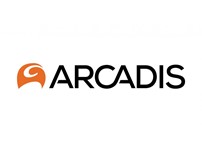Designers and Passport
|
Designers and Passport
|
More and more designers have been starting to use Passport, so we spoke with some members of the Principal Designers Working Group (the PDWG) to understand their perspective.
The Principal Designers Working Group is an established authoritative body on all things CDM. The group has representatives from most major consultancies and contractors working for National Highways on major projects, the operational community on Areas 1 and 14, and from different interest groups within National Highways.
The group’s key objectives are:

Doug Potter: I’m Associate Technical Director at Arcadis and am currently working on the Technical Advisor Framework supporting National Highways in the Yorkshire and North-East and Midlands Regions. I previously acted as Principal Designer Manager on the Pennine Upgrade Programme, including the A57 Improvement Scheme and A66 Feasibility Study. I am also secretary for the Principal Designers Working Group.
Mark Lamport: I am a Technical Director & Principal Designer Manager within the Arcadis Highways business. I’m currently the Principal Designer Manager Team Lead on the M4 Jn 3 – 12 Smart Motorway with Arcadis Jacobs JV as designer and Balfour Beatty Vinci JV as principal contractor.

Clare Brown: I’m Lead Health and Safety Advisor at BAM Nuttall, sit on the Highways Passport Steering Group and attend the Principal Designer Working Group.
Mark: Although the Passport has not been mandated on the M4 Smart Motorway Project our design team took the decision to support it and our site-based team have the Passport. We’re currently rolling it out more widely to design teams and developing an implementation strategy. This strategy needs to strike the right balance, but we see the ultimate benefits and are very keen to support it.
So far, the rollout has gone smoothly. Due to role changes, we have had a few Passport Administrator handovers, and I am aware that on several occasions our current Administrator has needed to obtain support from Mitie and RPL to deal with specific questions on Passport administration which have now been resolved.
Doug: The value is in making sure all our processes and procedures are in place, so that we are sure the designers have all the accreditations and competencies they require. Passport will help to standardise this. We’ve had issues in the past with accreditations not being in place, which have delayed inspections and survey works taking place. It is often too easy to fall back on generic in-house systems when we go out on site. Our processes need to be right, and Passport will contribute significantly to that being the case.
It will be very helpful when all designers have a Passport. Standardising the induction process can only be an advantage, making the induction process more efficient, helping to identify where the gaps are and ensuring designers have a greater level of understanding.
Mark: As the Passport take-up increases it will become a standard “must-have” and the ability of the Passport to act as a Motorway Pass will also be of benefit to designers when undertaking pre-construction surveys.
Doug: We’re very keen to get our designers out on site more – there is a recognition that young designers don’t get as much site experience as they should. Being on site gives designers a feel for the latest construction techniques, the constraints and problems encountered and the buildability aspects of the designs they are producing. Passport will promote this process.
If I was asked if I could attend site tomorrow, the Passport provides a means to quickly check that I have everything I need. It is important, and we need to demonstrate we as designers have got the right skills, knowledge, training and experience.
Clare: What will help designers is when you go to several sites, you might be working for several PCs, you’ve got that one card with all your details on, and you can take it everywhere. It’s all a single source. You can scan it anywhere, no matter which PC. The Highways Common Induction lasts for three years and then site-specific inductions should be cut down to less than thirty minutes as you have the HCI.
Doug: So the advantages are the consistency of qualification, efficiency, and it will be particularly useful for younger designers coming through.